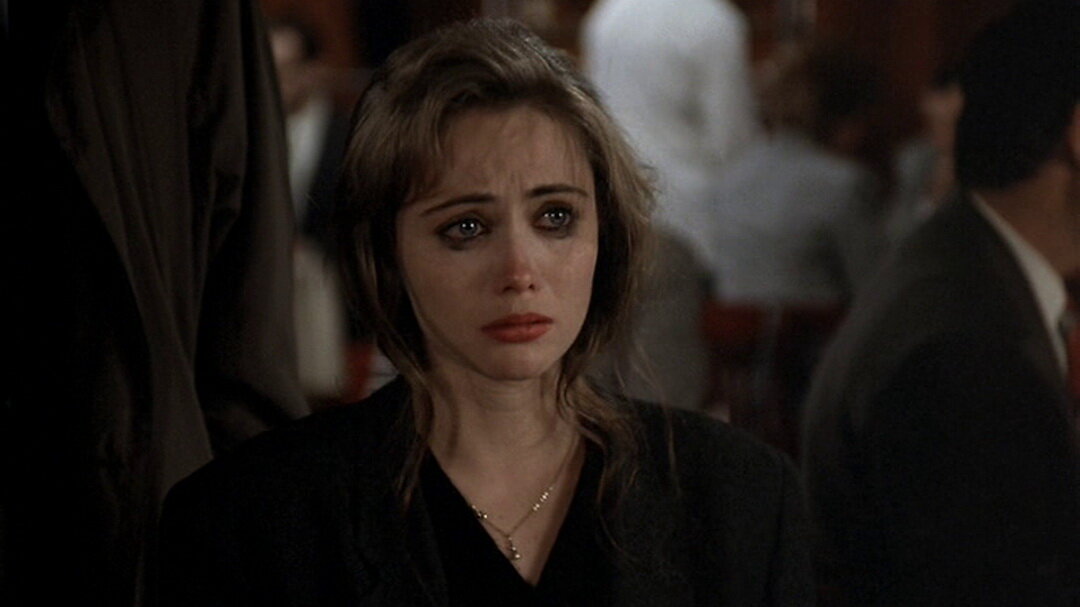Phuong Presses Play: How Does One Touch A Memory?
In a profile of Jeanne Moreau for Vogue, Marguerite Duras recalls a conversation with Alain Resnais who wonders, in spite of his love for the medium, whether films can ever communicate scents. He concludes that a woman’s perfume would thus be the most elusive cinematic object, intoxicatingly slipping out of the camera’s gaze. Yet, writing on Claude Sautet, critic Janice Tong compares his cinema to the perfume on a lover’s skin. The ephemeral traces tantalizingly linger on. Such sensory fragility is movingly present in the director’s sublime The Things of Life, a perennial favourite that has unnerved and bewitched me all at once, as I endlessly ponder on the very act of remembering. How does one touch a memory? Can you even smell it? In Sautet’s films, and especially in The Things of Life, the answer is yes.
Despite being enamoured of Claude Sautet’s works for almost a decade, I still find it difficult to articulate the quietly arresting specificities of their mastery. Perhaps it is easier to define these films by what they are not. Though veering into experimental terrains at times, Sautet’s cinematic language eschews both the Brechtian, Godardian distancing techniques as well as the surreal Rivettian conceits. Flashes of humanism recall Truffaut but Sautet, who was quite a bit older than the former, imbues a preoccupied melancholy into the fabric and atmosphere of his movies that is decidedly more grownup. His bourgeois characters might frequent beautiful cafés and bistros, but neither Rohmer’s intellectualizing detachment nor Chabrol’s scathing judgement are to be found here. Instead, the earnestness and deep sincerity with which Sautet writes and dresses his men and women are wholly disarming. Such an approach is certainly not hip or chic, not within the context of the French New Wave where ironic détournements reign. Sautet was judged as passé, springing out of the same sensibility as the cinéma du papa directors. When he passed away, his death did not even merit an obituary in Cahiers du Cinéma.
The man who didn’t fit in, the man who was at a crossroads, the man who loved music and chose to compose with images, all of these paradoxes and contradictions breathtakingly manifest themselves in The Things of Life, the film that finally propels Sautet to mainstream popularity. Opening on an impressionistically shot car accident that befalls Pierre, a middle-aged architect played by Michel Piccoli, the film emphasizes a breakage in time and in human consciousness. This rupture would become the circling motif that haunts the narrative. The story zig-zags between slow-motion snippets of the crash and memories from Pierre’s life, torn between the demands of his girlfriend Helen (Romy Schneider) and the muted heartache of his estranged wife Catherine (Lea Massari).
When I first watched the film, I merely thought of the flashbacks as just that, flashbacks. A recent revisit unearths something more philosophical and slippery about the film’s ellipsis. It is not so much that Pierre is recalling past memories as he loses consciousness, a seeing-your-life-pass-before-your-eyes rite before death. This time around, the past and the present appear to co-exist, so much that Pierre’s recollections of Helen sweetly kissing him among a grassy field or the sound of a shutter loudly banging in the wind seem more like a parallel reality. It reminds me of what Henri Bergson considers to be “pure memory,” which is image-based and not learned by the human brain, but rather stored in the duration of time. As the moments from the car crash recur and stretch seemingly to infinity, so do these memories expand and coagulate. They physically envelop Pierre even when his brain is slowly shutting down.
As the film is configured around a premise of loss, the presence of things, now beguilingly out of touch, becomes tactile and sensory. A moment that really strikes me is when Helen buys some new clothes for Pierre, who at that point is already dying from the crash. The film shows a close-up of several blue shirts, which she knows is his favourite colour. It’s a benign, quotidian detail that suddenly feels startling, as I realize that the beautiful stripy chemise that Helen pairs with jeans—a very chic look—in an earlier scene is probably Pierre’s own shirt. Unbeknownst to Helen at that very moment, this casual intimacy has ceased to exist. Such is the invisible magic of Sautet. The director lends a tangible poignancy to the unassuming objects of everyday life which in turn engender the heady but never heavy emotional responses that his films elicit. I think of the ornate wicker chair that sits squarely in Pierre’s terrace among the other more modernist artefacts. Old-fashioned and rather out of place, the chair perfectly captures Pierre’s pathos, an architect who refuses to build houses that would overlook ugly garages. But sometimes, objects are also just objects. In the same apartment, a silly ceramic figure of a puppy perches on the fireplace mantel. I am dying to know its backstory, but it wouldn’t matter anyway. It is there because it’s there.
Encountering a work that seems especially attuned to your psyche can feel, perhaps, a bit like a crash. Your senses suddenly become so much more alert. I was eighteen when I first saw The Things of Life. I can’t remember how I knew about it. Perhaps I was going through my Michel Piccoli phase. It was the summer, and I was back in Hanoi after my first college year in New York. I had always hated the scorching Vietnamese June, so much that I often kid that this was why I left the country. Heat felt unproductive to me, and I would lay spreadeagled on my bed and bask in the coolness from the AC for a whole day, completely overtaken by a resentful languor. The film jolted me out of this temporary stupor, leaving me emotionally shipwrecked. Looking back, it is rather funny how I went, “My god, yes, this man’s midlife crisis completely mirrors the discontent of my teenage existence.” But that was the nice thing about being young. I simultaneously felt left out of the outside world, yet I was also the sole centre of all the things that I loved.
Like Pierre, I’m struggling to piece back the splinters of that experience. I can recall loving the apartment. Schneider’s petulance. Arguments that end in spilled wine over white tablecloth. A general restlessness about whether I’d grow old enough to wallow in middle-aged regrets, which I found terribly attractive.
It is always interesting, and sometimes mortifying, to revisit works that mean so much to me in my younger days, and suddenly discover that I have either missed certain facets or misread the whole thing entirely. Back then, while I sympathized with Pierre’s crisis, I was less charitable about the way he behaves towards either Helen or Catherine. He is such a careless cad. Now, knowing a tad more about the greyness of life and relationships, the messy imperfections of the character—and everyone else in his orbit—turn human, bodily, and real. At the end of the day, regardless of all the things—and the people—of life, you are born alone, and you will die alone. Pierre has drafted a breakup letter to Helen but changes his mind about sending it. Lying injured in the grassy field, his inner monologue murmurs that he must get rid of the letter, “so as not to live alone.” But among the wreckage, he is alone. On the operating table, wheeled into a surgery room that has the same fading blueish paint as his own apartment, he is also alone. His last flickering vision is of the family boat on which his wife and son wave at him while he waves back, his body gradually submerging and disappearing into the blue water. Tranquility mixed with regret, this image embodies the Sautet touch, a kind of humanist acceptance regarding the inevitable twists and turns in life.
The Things of Life has become one of the things in my life. Even before this recent rewatch, images from the film would cross my mind often, such as one of Romy Schneider working at a typewriter, wearing only a pair of big tortoiseshell-framed glasses and a blue towel. Meanwhile, Piccoli gazes at her from behind, cigarette dangling from his lips. This goes for all Sautet films that I’ve seen. Sometimes I’d be sitting at a Parisian café and out of nowhere, I think of Un coeur en hiver and Emmanuelle Béart having a nervous breakdown in a café after getting rejected. I can recall exactly the petulant war paint she adorns, eyes all smudgy with black liner and lips wet with red lipstick and tears. Sautet’s gift for grounding his characters and stories in specific moods, locations, utterances, and gestures can induce such cinematic hauntings. I am wary of loving French directors too much, knowing full well that since I’m neither white nor French, there will always be a distance between me and the works, and usually it is this very distance that interests me. But I’ve yet to feel this with Sautet. The gap is somewhat more muted here. The topography of emotions in his oeuvre is so unassumingly believable that, like the omnipresence of memories in The Things of Life, the barriers are erased, and my guards are let down. I let the memories, and the wisp of that cinematic perfume wash over me.


